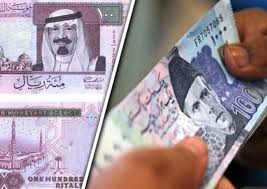Riyal to PKR
The exchange rate between the Saudi Riyal (SAR) and the Pakistani Rupee (PKR) is of significant importance for many people, particularly in Pakistan. With millions of Pakistani expatriates working in Saudi Arabia and regularly sending money back home, the conversion rate between these two currencies directly affects the financial well-being of countless families. This article provides a comprehensive overview of the Riyal to PKR exchange rate, including the factors influencing it, how to get the best rates and its broader economic impact.
The Basics of Currency Exchange
Currency exchange rates represent the value of one country’s currency in terms of another. For instance, if the exchange rate is 1 SAR = 75 PKR, this means that one Saudi Riyal can be exchanged for 75 Pakistani Rupees. These rates fluctuate due to various factors, including economic conditions, market demand, and geopolitical events.
Factors Influencing the Riyal to PKR Exchange Rate
Several factors determine the exchange rate between the Saudi Riyal and the Pakistani Rupee. Understanding these can help you better anticipate changes in the rate and make more informed decisions when exchanging money.
-
Economic Conditions in Pakistan: The state of Pakistan’s economy is a primary factor in determining the value of the rupee. Factors like inflation, interest rates, and economic growth can all influence the rupee’s strength against the Riyal. For example, higher inflation in Pakistan typically leads to a weaker rupee.
-
Saudi Arabia’s Economic Policies: The Saudi Riyal is pegged to the US Dollar, meaning its value is relatively stable. However, Saudi Arabia’s economic policies, including changes in oil production or shifts in government spending, can impact the flow of Riyals and, consequently, the SAR to PKR exchange rate.
-
Remittances from Saudi Arabia: Pakistan receives a significant amount of remittances from its expatriates in Saudi Arabia. The demand for converting Riyals into Rupees can influence the exchange rate, particularly during peak periods like Ramadan or Eid when remittances tend to increase.
-
Global Oil Prices: As a major oil-producing country, Saudi Arabia’s economy is closely tied to global oil prices. Changes in oil prices can affect the value of the Riyal, which in turn impacts the Riyal to PKR exchange rate.
-
Political Stability: Both countries’ political environments play a role. Political instability in Pakistan can lead to a weaker rupee, while stability or changes in Saudi Arabia’s geopolitical situation can also have an indirect impact on the exchange rate.
How to Get the Best Riyal to PKR Exchange Rate
Whether you’re sending money back home to Pakistan, traveling between the two countries, or making business transactions, getting the best exchange rate can save you a significant amount of money. Here are some tips to help you secure a favorable rate:
-
Monitor Exchange Rate Trends: Exchange rates fluctuate constantly. By keeping an eye on trends over time, you can identify the best times to exchange money. Many online tools and apps provide real-time exchange rate updates.
-
Use Reputable Exchange Services: Banks, currency exchange centers, and online platforms offer different rates. Compare these options to find the most favorable rate. Reputable services like Western Union, MoneyGram, and trusted local exchange centers often provide competitive rates for Riyal to PKR conversions.
-
Avoid Last-Minute Exchanges: When traveling, it’s better to exchange currency beforehand rather than at airports, where rates are usually less favorable. Planning ahead allows you to take advantage of better rates.
-
Leverage Online Transfers: Online money transfer services like Wise (formerly TransferWise), PayPal, or specialized remittance services often offer better exchange rates and lower fees compared to traditional banks. These services also provide the convenience of transferring money directly from your account to your recipient’s bank account in Pakistan.
-
Negotiate for Better Rates: If you’re exchanging a large amount of money, especially at a physical exchange center, don’t hesitate to negotiate for a better rate. Some centers may offer discounts for larger transactions.
The Impact of Riyal to PKR Exchange Rate on Daily Life
The exchange rate between the Riyal and Rupee has a broad impact on daily life, particularly for Pakistani expatriates and their families. Here’s how:
-
Remittances: As mentioned earlier, millions of Pakistanis work in Saudi Arabia, sending a substantial portion of their earnings back to Pakistan. A favorable Riyal to PKR exchange rate means more rupees for every Riyal sent, directly benefiting the recipients by increasing their purchasing power.
-
Cost of Living: For families in Pakistan who rely on remittances, fluctuations in the exchange rate can affect their cost of living. A weaker rupee means that daily expenses, including food, housing, and education, become more expensive relative to the amount of money received.
-
Business Transactions: Many businesses in Pakistan import goods from or export goods to Saudi Arabia. The exchange rate impacts the cost of these transactions, influencing prices for consumers and profit margins for businesses.
-
Travel and Tourism: For Pakistanis traveling to Saudi Arabia for pilgrimage (Hajj and Umrah) or other purposes, the exchange rate determines how far their money will go. A stronger rupee can make travel more affordable, while a weaker rupee increases costs.
-
Investment Decisions: Fluctuations in the exchange rate can also influence investment decisions, both for individuals and businesses. A strong rupee might encourage investment in Pakistani assets, while a weaker rupee might deter it.
Conclusion
The Riyal to PKR exchange rate is a critical aspect of financial planning for many Pakistanis, especially those with ties to Saudi Arabia. Whether you’re managing remittances, conducting business, or planning travel, staying informed about the factors influencing the exchange rate can help you make smarter financial decisions. By monitoring trends, using reputable exchange services, and timing your transactions carefully, you can maximize the value of your money and better navigate the financial landscape.




